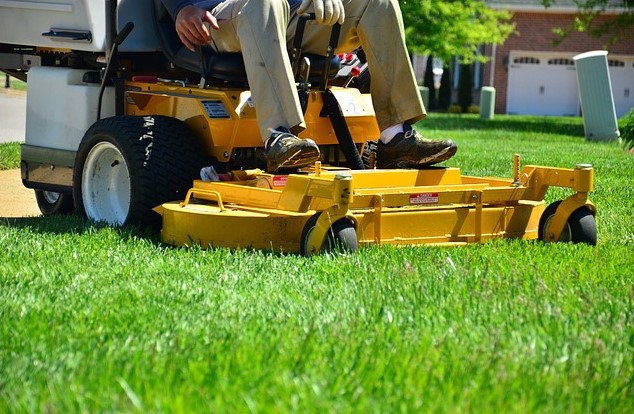The end of summer does not mean the end of yard care. In fact, autumn is a great time to use the cool weather to fertilize, control weeds, and improve the overall health and appearance of your yard. Here are some tips to help get you started.
Keep Mowing
Continue to water and mow your lawn, as needed. As fall comes to a close drop the mower’s blade to its lowest setting for the last two cuttings of the year. That will allow more sunlight to reach the crown of the grass and cutting your lawn slightly shorter in autumn helps prevent the grass from matting down under leaves and snow. Avoid cutting the grass too short, however. Tightly clipped turf has fewer roots and allows weeds to get a foothold.
And before you put that lawn mower away for the year, why not give it a coat of ReColor to help brighten and protect the finish?
Continue to Water on Schedule
Most lawns need water whenever it’s dry — no matter the season. If you had a lot of dry days – or drought – water once or twice per week. Water long enough to soak the soil several inches deep. Early morning is the best time of day to water and try to avoid watering in the evening because that encourages fungal diseases.
It’s Time to Rake the Leaves
It’s important to remove fallen leaves from your lawn as soon as possible so don’t wait until all the leaves have fallen from the trees to start raking. If you do, the leaves can become wet from rain and dew. This causes the leaves to stick together and form an impenetrable mat that, if left unmoved, will suffocate the grass and breed fungal diseases.
An alternative to raking leaves is to use a lawnmower fitted with a collection bag or vacuum system. These methods are particularly effective if you have a very large yard with many deciduous trees. Regardless of whether you use a rake or a lawnmower, be sure to remove the leaves before they turn into a soggy, suffocating mess.
Tackle those Dead Patches
The early part of autumn is a great time to reseed any small dead or thin patches in cool-season lawns. If you seed in autumn, you’ll have fewer weeds and the seedlings will become established before stressful hot weather conditions arrive. A mulch product embedded with seed and fertilizer is a convenient way to fill the gaps.
Lay Sod
Spring or fall is a good time to start a new cool-season lawn or patch existing turf with sod. Moderate temperatures and abundant moisture get sod off to a quick start. High-quality sod should be thick, dense, and weed-free.
Aerate Your Soil
Fall is also an ideal time to aerate your lawn so that oxygen, water, and fertilizer can easily reach the grass’s roots. Rent a gas-powered, walk-behind lawn aerator and the self-propelled machine will quickly punch holes into the soil and extract plugs of dirt.
Fertilize!
Most lawn experts agree that fall is the best time to fertilize your lawn. The reason is grass leaves grow much more slowly as the weather turns cool, but the grass roots and rhizomes continue to grow quickly. An autumn application of fertilizer delivers essential nutrients for the grass to grow deep roots now and to keep nutrients on reserve for a healthy start next spring. Wait until mid-to-late autumn to fertilize. Apply a dry lawn fertilizer to all grassy areas and be careful not to miss any spots
